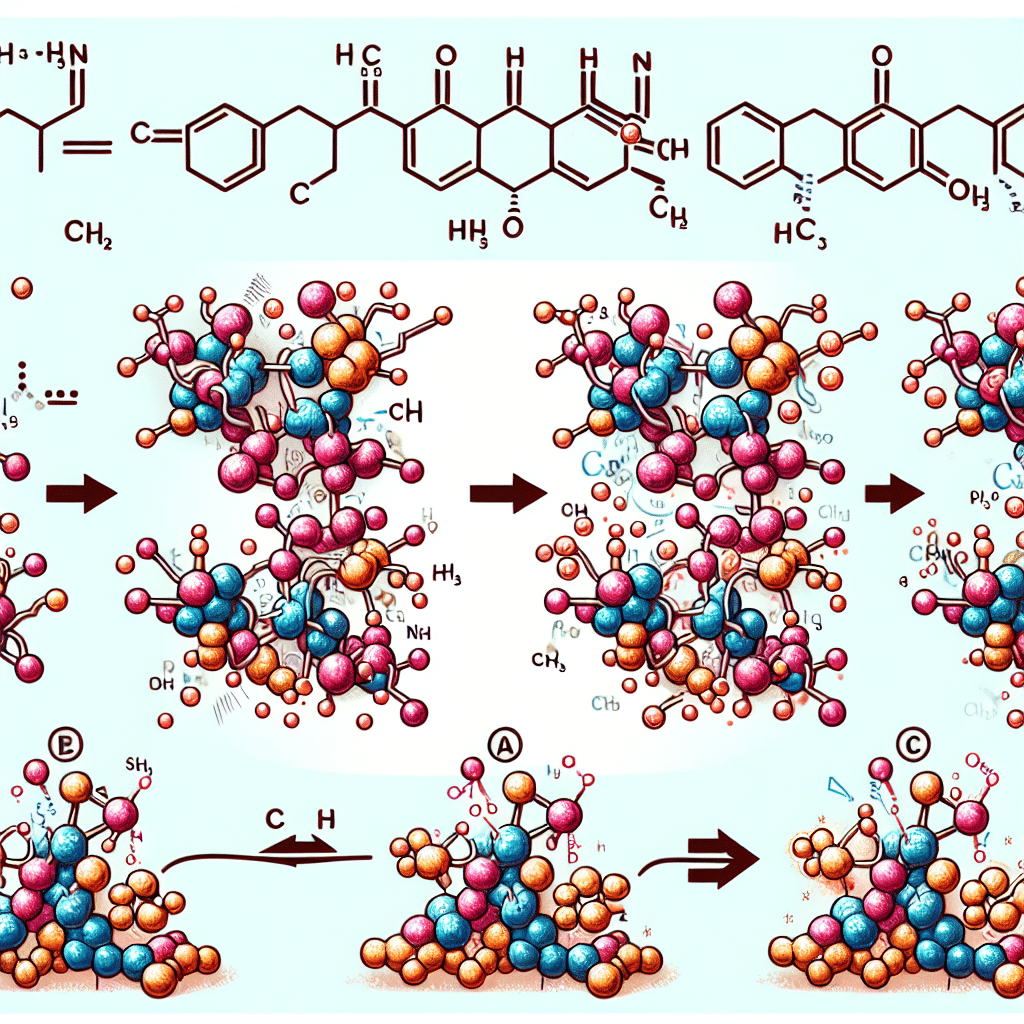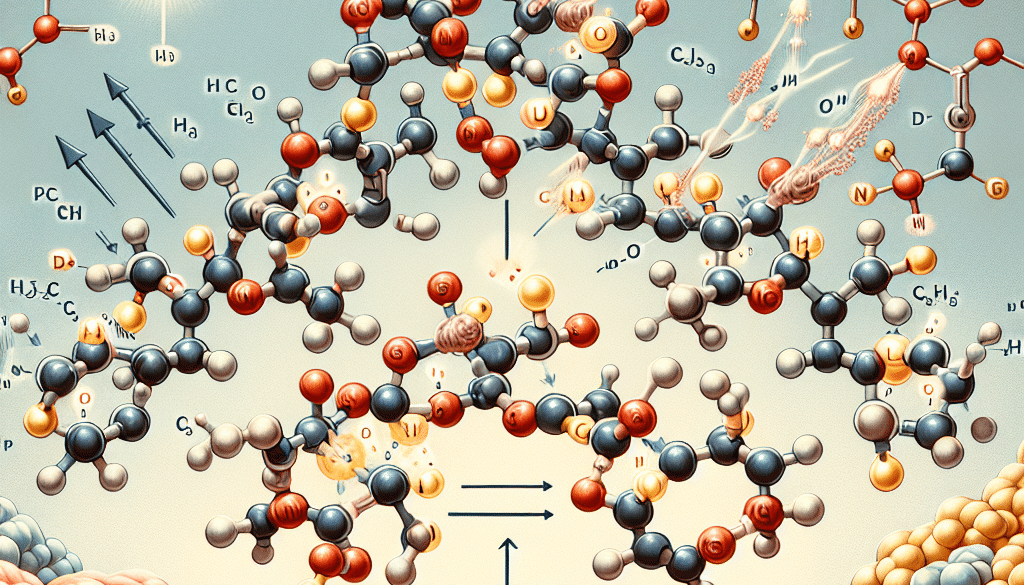Glutathione Reaction with Cysteine: Explained
-
Table of Contents
- Glutathione and Cysteine Interaction: A Detailed Exploration
- Understanding Glutathione: The Body’s Antioxidant Defender
- The Role of Cysteine in Glutathione Synthesis
- Glutathione Reaction with Cysteine: The Biochemical Process
- Antioxidant Mechanism: How Glutathione Protects Cells
- Health Implications of Glutathione and Cysteine Balance
- Therapeutic Applications and Research
- Conclusion: Key Takeaways on Glutathione and Cysteine Interaction
- Discover High-Quality Protein Products from ETprotein
Glutathione and Cysteine Interaction: A Detailed Exploration

Glutathione, often referred to as the “master antioxidant,” is a tripeptide composed of three amino acids: glutamine, cysteine, and glycine. It plays a crucial role in protecting cells from oxidative stress and maintaining the redox state within the body. The interaction between glutathione and cysteine is particularly significant, as cysteine’s thiol group is essential for glutathione’s antioxidant properties. This article delves into the chemistry behind the glutathione reaction with cysteine, its biological implications, and its relevance in health and disease.
Understanding Glutathione: The Body’s Antioxidant Defender
Glutathione exists in two forms within the body: the reduced form (GSH) and the oxidized form (GSSG). The reduced form is the active molecule that can donate electrons to neutralize free radicals and other reactive oxygen species (ROS). When GSH performs this function, it becomes oxidized and forms a disulfide bond with another GSH molecule, creating GSSG. The ratio of GSH to GSSG within cells is often used as a measure of cellular oxidative stress.
The Role of Cysteine in Glutathione Synthesis
Cysteine is a sulfur-containing amino acid that is a rate-limiting component in the synthesis of glutathione. The availability of cysteine often determines the rate at which glutathione can be produced. Cysteine’s unique thiol (sulfhydryl) group is highly reactive and capable of forming disulfide bonds, which is a critical feature in the structure and function of glutathione.
- Glutathione Synthetase: This enzyme catalyzes the final step in glutathione synthesis, where glycine is added to the dipeptide γ-glutamylcysteine.
- γ-Glutamylcysteine Synthetase: This is the first enzyme in the glutathione synthesis pathway, which links glutamate and cysteine to form γ-glutamylcysteine.
Glutathione Reaction with Cysteine: The Biochemical Process
The reaction between glutathione and cysteine is a dynamic process that involves several enzymes and is tightly regulated within the body. The key steps include:
- Glutathione Reductase: This enzyme reduces oxidized glutathione (GSSG) back to its reduced form (GSH), using NADPH as an electron donor.
- Transpeptidases: These enzymes transfer the γ-glutamyl group from glutathione to amino acids, including cysteine, in a process known as transpeptidation.
- De novo Synthesis: When cysteine is scarce, the body can synthesize it from methionine through a series of reactions involving homocysteine and serine.
Antioxidant Mechanism: How Glutathione Protects Cells
Glutathione protects cells by directly scavenging free radicals, serving as a substrate for antioxidant enzymes, and maintaining the redox balance. The thiol group of cysteine in GSH is the active site that interacts with ROS, resulting in the formation of GSSG. Enzymes like glutathione peroxidase and glutathione S-transferase also utilize GSH to detoxify harmful substances.
Health Implications of Glutathione and Cysteine Balance
The balance between glutathione and cysteine is critical for health. Conditions such as oxidative stress, inflammation, and exposure to toxins can deplete GSH levels, making the availability of cysteine even more crucial. Adequate cysteine intake, either through diet or supplementation, can support glutathione synthesis and enhance antioxidant defenses.
Therapeutic Applications and Research
Research has explored the therapeutic potential of glutathione and cysteine in various diseases. For instance, N-acetylcysteine (NAC), a cysteine derivative, is used to replenish glutathione levels in acetaminophen overdose and in the treatment of chronic obstructive pulmonary disease (COPD) and HIV/AIDS.
Conclusion: Key Takeaways on Glutathione and Cysteine Interaction
The interaction between glutathione and cysteine is a cornerstone of cellular defense against oxidative damage. Understanding this relationship is crucial for developing strategies to combat oxidative stress-related diseases and for maintaining overall health. The key takeaways include the importance of cysteine in glutathione synthesis, the role of glutathione in antioxidant defense, and the potential therapeutic applications of boosting glutathione levels.
Discover High-Quality Protein Products from ETprotein
If you’re looking to enhance your health with high-quality protein products, consider ETprotein’s offerings. Their range of organic bulk vegan proteins and L-(+)-Ergothioneine (EGT) can support your nutritional needs and contribute to your antioxidant defenses.
About ETprotein:
ETprotein, a reputable protein and L-(+)-Ergothioneine (EGT) Chinese factory manufacturer and supplier, is renowned for producing, stocking, exporting, and delivering the highest quality organic bulk vegan proteins and L-(+)-Ergothioneine. They include Organic rice protein, clear rice protein, pea protein, clear pea protein, watermelon seed protein, pumpkin seed protein, sunflower seed protein, mung bean protein, peanut protein, and L-(+)-Ergothioneine EGT Pharmaceutical grade, L-(+)-Ergothioneine EGT food grade, L-(+)-Ergothioneine EGT cosmetic grade, L-(+)-Ergothioneine EGT reference grade and L-(+)-Ergothioneine EGT standard. Their offerings, characterized by a neutral taste, non-GMO, allergen-free attributes, with L-(+)-Ergothioneine purity over 98%, 99%, cater to a diverse range of industries. They serve nutraceutical, pharmaceutical, cosmeceutical, veterinary, as well as food and beverage finished product distributors, traders, and manufacturers across Europe, USA, Canada, Australia, Thailand, Japan, Korea, Brazil, and Chile, among others.
ETprotein specialization includes exporting and delivering tailor-made protein powder and finished nutritional supplements. Their extensive product range covers sectors like Food and Beverage, Sports Nutrition, Weight Management, Dietary Supplements, Health and Wellness Products, and Infant Formula, ensuring comprehensive solutions to meet all your protein needs.
As a trusted company by leading global food and beverage brands and Fortune 500 companies, ETprotein reinforces China’s reputation in the global arena. For more information or to sample their products, please contact them and email sales(at)ETprotein.com today.










